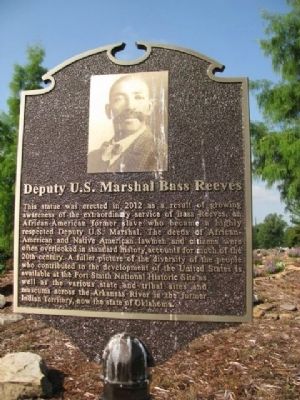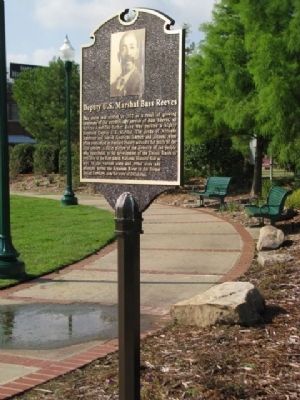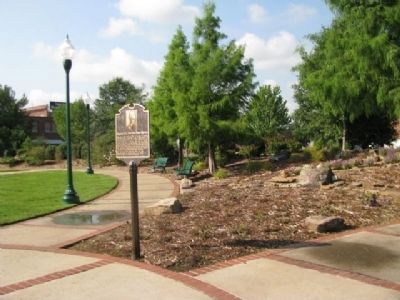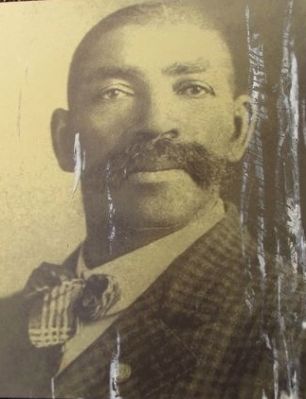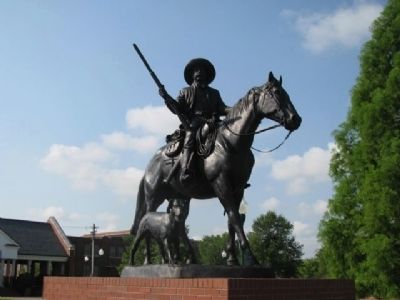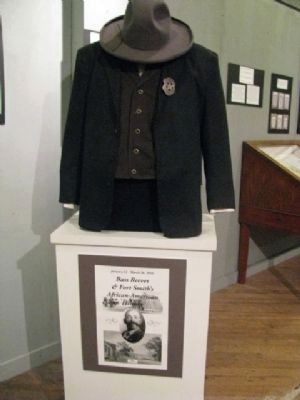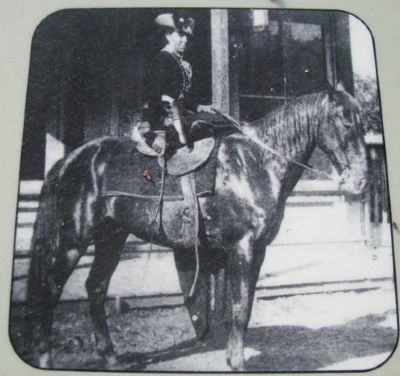Fort Smith in Sebastian County, Arkansas — The American South (West South Central)
Deputy U.S. Marshal Bass Reeves
Erected 2012.
Topics. This historical marker is listed in these topic lists: African Americans • Law Enforcement. A significant historical year for this entry is 2012.
Location. 35° 23.351′ N, 94° 25.736′ W. Marker is in Fort Smith, Arkansas, in Sebastian County. Marker is on Garrison Ave (U.S. 64), on the left when traveling west. Located within Ross Pendergraft Park. Touch for map. Marker is at or near this postal address: 200 Garrison Ave, Fort Smith AR 72901, United States of America. Touch for directions.
Other nearby markers. At least 8 other markers are within walking distance of this marker. Bass Reeves - Lawman on the Western Frontier (within shouting distance of this marker); The Women’s Jail, 1872-1888 (within shouting distance of this marker); The Guardhouse, 1849-1871 (within shouting distance of this marker); The Parade Grounds (within shouting distance of this marker); The Flagstaff (within shouting distance of this marker); North 2nd Street in 1860 (within shouting distance of this marker); Frisco Train Depot (about 300 feet away, measured in a direct line); A Building Worth Saving (about 300 feet away). Touch for a list and map of all markers in Fort Smith.
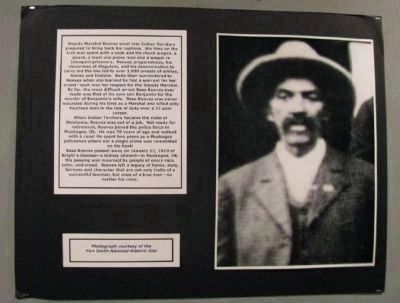
Photograph of the poster by Denise Boose, July 13, 2012
7. Photograph courtesy of the Fort Smith Museum of History
Deputy Marshal Reeves went into Indian Territory prepared to bring back his captives. His time on the trail was spent with a cook and his chuck wagon, a guard, a least one posse man and a wagon to transport prisoners. Reeves preparedness, his cleverness at disguises, and his determination to carry out the law led to over 3,000 arrests of whites, blacks and Indians. Belle Starr surrendered to Reeves when she learned he had a warrant for her arrest - such was her respect for the Deputy Marshal. By far, the most difficult arrest Bass Reeves ever made was that of his own son Benjamin for the murder of Benjamin's wife. Bass Reeves was never wounded during his time as a Marshal and killed only fourteen men in the line of duty over a 32 year career.
When Indian Territory became the state of Oklahoma, Reeves was out of a job. Not ready for retirement, Reeves joined the police force in Muskogee, Ok. He was 70 years of age and walked with a cane! He spent two years as a Muskogee policeman where not a single crime was committed on his beat!
Bass Reeves passed away on January 12, 1910 of Bright's disease - kidney ailment - in Muskogee, OK. His passing was mourned by people of every race, color, and creed. Reeves left a legacy of honor, duty, fairness and character that are not only traits of a successful lawman, but ones of a true man - no matter his color.
Credits. This page was last revised on November 5, 2023. It was originally submitted on July 28, 2012, by Denise Boose of Tehachapi, California. This page has been viewed 2,861 times since then and 155 times this year. Last updated on August 2, 2012, by Richard E. Miller of Oxon Hill, Maryland. Photos: 1, 2, 3, 4, 5, 6, 7, 8. submitted on July 28, 2012, by Denise Boose of Tehachapi, California. • Craig Swain was the editor who published this page.
